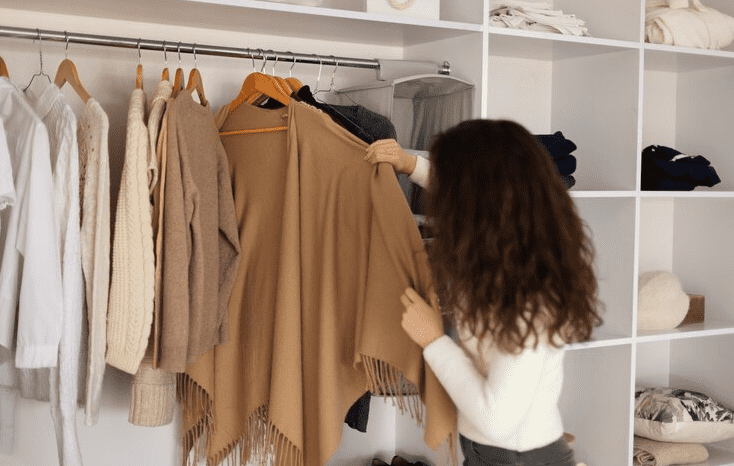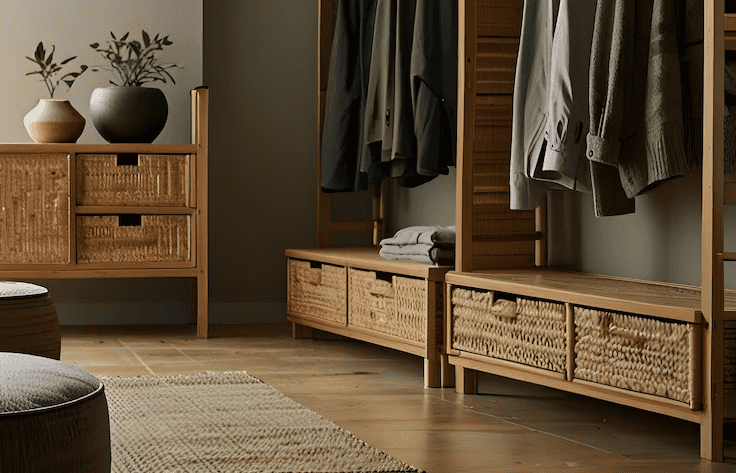Have you ever found yourself staring at a closet full of clothes but feeling like you have nothing to wear? You’re not alone. Building a versatile wardrobe is the key to solving this common dilemma. A well-curated wardrobe not only saves time and reduces stress but also promotes sustainability by encouraging mindful consumption.
By focusing on versatility, you can create a collection of clothing that works for various occasions and expresses your style, all without overflowing your closet. This article will guide you through the process of assessing your needs, decluttering your wardrobe, defining essentials, choosing a color palette, and more. Let’s dive in and create a wardrobe that works for you!
Assess Your Needs and Personal Style
The first step in building a versatile wardrobe is understanding your lifestyle. Different activities and environments require different clothing. For example, if you work in a corporate setting, your wardrobe will need to include professional attire like blazers, dress pants, and formal shoes.

On the other hand, if you have a more casual lifestyle or work from home, you might prioritize comfortable yet presentable pieces like well-fitted jeans, t-shirts, and cardigans.
Think about your daily activities—how often do you attend formal events? Do you exercise regularly? Do you have a social calendar filled with gatherings? By analyzing your lifestyle, you can tailor your wardrobe to meet your unique needs.
Identifying your style is essential for building a wardrobe that truly reflects who you are. Start by examining the clothing items you feel most confident and comfortable in. Are they minimalist, trendy, or perhaps a bit bohemian? Look for patterns in your wardrobe and consider creating a style mood board using images that inspire you.
Once you’ve identified your style, stick to it when shopping for new items. This will help you avoid impulse purchases that don’t fit your overall aesthetic and ensure your wardrobe feels cohesive and authentic.
Declutter Your Current Wardrobe
Before you can build a versatile wardrobe, it’s important to declutter your existing one. Start by taking everything out of your closet and sorting items into three categories: keep, donate, and discard.
Be honest with yourself—if you haven’t worn something in over a year or it no longer fits, it’s time to let it go. This process not only makes room for new pieces but also helps you rediscover items you may have forgotten.
When deciding what to keep, focus on items that fit well, are in good condition, and can be styled in multiple ways. Ask yourself: Does this piece align with my lifestyle and personal style? Is it versatile enough to be worn for different occasions? Items that meet these criteria should be kept, while those that don’t should be donated or discarded.
Define Your Wardrobe Essentials
A versatile wardrobe starts with strong foundation pieces that can be mixed and matched with ease. Essential items include plain t-shirts, well-fitted jeans, a little black dress, and a versatile white shirt.
These are the building blocks of your wardrobe that can be dressed up or down depending on the occasion. For example, a white shirt can be paired with jeans for a casual look or tucked into a pencil skirt for a more formal ensemble.

Investing in versatile outerwear is crucial, especially if you live in a region with varying weather conditions. A tailored blazer can elevate any outfit, while a classic trench coat provides both style and functionality. A lightweight jacket, such as a denim or leather jacket, is perfect for transitional seasons. These pieces should be neutral and able to complement multiple outfits.
Footwear is another key aspect of a versatile wardrobe. Consider investing in a few high-quality pairs that cover different occasions.
Sneakers are a must-have for casual and active days, while a pair of classic pumps or loafers can take you from the office to dinner. Boots, whether ankle or knee-high, are great for colder months and can add a stylish edge to various outfits.
Choose a Color Palette
Starting with a neutral color palette is a smart strategy for a versatile wardrobe. Colors like black, white, gray, navy, and beige are timeless and can be easily mixed and matched. Neutrals provide a strong foundation that allows you to create countless outfit combinations without clashing colors.
For example, a black blazer can be paired with almost any top and bottom, making it a versatile wardrobe staple.
While neutrals are essential, adding a few accent colors can bring variety and personality to your wardrobe. Choose a couple of colors that complement your neutrals and reflect your style. For example, if you love bold hues, consider adding a red scarf or a cobalt blue sweater.
These accent pieces can be rotated throughout your outfits to keep your look fresh and exciting without overwhelming your wardrobe.
Invest in High-Quality Basics
When building a versatile wardrobe, it’s important to focus on quality rather than quantity. Investing in well-made, durable items may require a higher upfront cost, but these pieces will last longer and maintain their appearance over time.
Look for fabrics like cotton, wool, and silk, which not only feel luxurious but also wear well. High-quality basics like a perfectly tailored blazer or a sturdy pair of jeans will serve as the backbone of your wardrobe.

Timeless pieces are those that never go out of style. These include items like a classic white button-down shirt, tailored trousers, and a little black dress.
These pieces are versatile and can be styled in various ways, ensuring they remain relevant year after year. By prioritizing timeless styles, you can create a wardrobe that transcends fleeting fashion trends.
Incorporate Trendy Pieces
While it’s important to focus on timeless pieces, incorporating a few trendy items each season can keep your wardrobe feeling fresh and current. However, the key is to do this without overhauling your entire wardrobe. Instead, choose one or two trends that resonate with you and find ways to integrate them with your existing pieces. For example, if animal prints are in style, you might add a leopard-print scarf or belt to your collection.
Accessories are a fantastic way to update your wardrobe without committing to new clothing items. A statement necklace, a colorful handbag, or a bold pair of sunglasses can instantly elevate your look and add a touch of personality.
Because accessories are often less expensive than clothing, they offer an affordable way to keep up with trends and experiment with new styles.
Organize Your Wardrobe Space
An organized wardrobe is essential for maintaining versatility. If your clothes are crammed into your closet or drawers, you’re less likely to wear them. Invest in storage solutions that make the most of your space, such as hangers that prevent creases, clear storage bins for accessories, and drawer dividers for small items. Consider using shelving or hanging organizers to maximize vertical space in your closet.
Keeping frequently worn items visible and easily accessible is another crucial aspect of wardrobe organization. Arrange your clothes by category (e.g., tops, bottoms, outerwear) and season, so you can quickly find what you need. Use hooks or a small rack to display accessories like scarves and belts, ensuring they don’t get lost in the shuffle.
Maintaining an organized wardrobe makes it easier to create outfits and keep track of what you own.
Create Outfit Combinations
One of the most powerful aspects of a versatile wardrobe is the ability to mix and match pieces to create different looks. Start by selecting a few key items—such as a white shirt, black trousers, and a denim jacket—and experiment with different combinations.
You can dress up a casual outfit with a blazer or dress down a more formal look with sneakers. By mixing and matching, you’ll maximize the use of each item in your wardrobe.
Planning your outfits in advance can save you time and reduce decision fatigue. Consider creating a weekly outfit plan, especially if you have a busy schedule. Lay out your outfits the night before or take photos of different combinations you love.
This practice not only streamlines your morning routine but also helps you avoid repeating the same looks too often.
Additional Tips
When shopping for versatile pieces, consider retailers that focus on quality and sustainability. Look for stores with a good reputation for durable clothing, and don’t be afraid to invest in higher-end basics.
To extend the life of your wardrobe, make sure to follow care instructions on clothing labels. Regularly clean and organize your wardrobe to keep everything in good condition.
For more insights into building a versatile wardrobe, check out resources on capsule wardrobes, minimalist fashion, and sustainable shopping practices.
Conclusion
Building a versatile wardrobe starts with understanding your lifestyle and personal style, decluttering your current clothing, and focusing on essential items. Choosing a neutral color palette, investing in high-quality basics, and incorporating trendy pieces strategically will further enhance your wardrobe’s versatility. Organizing your space and experimenting with outfit combinations will ensure you get the most out of your clothing.
Ready to transform your wardrobe? Start by assessing your current collection and identifying the gaps. Make mindful choices that align with your style and needs, and enjoy the confidence that comes with a versatile wardrobe.
A versatile wardrobe isn’t just about having the right clothes—it’s about feeling confident in your choices and expressing your true self through your style. With the right approach, you can build a wardrobe that simplifies your life and boosts your confidence every day.















